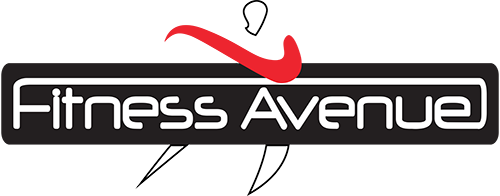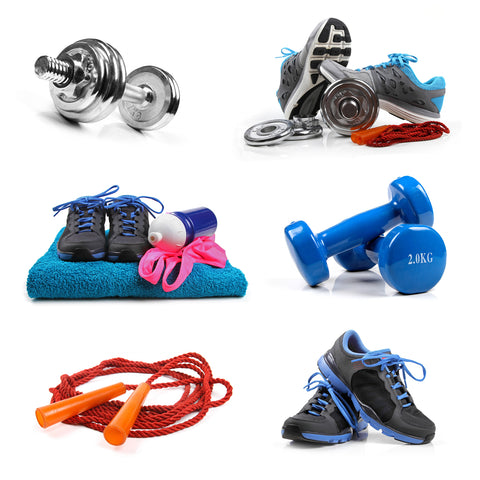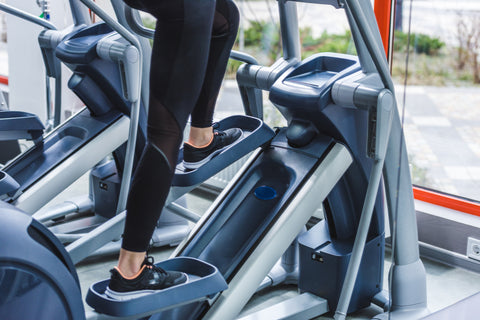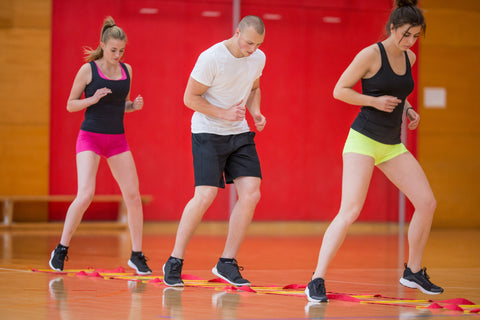How do you take care of your workout equipment? Most people who are serious about working out build up a lot of equipment over time, including medicine balls, weight bars, cardio pumps, and more. If you start to see clutter in your gym space, you can clean things up by choosing accessory racks and other equipment storage solutions. Here’s a breakdown of different options available to you and how you can make your workout equipment storage problem a thing of the past.
Storing Weight Equipment
Weightlifting is one of the most common workouts in the world, but the equipment used also takes up a lot of space. In addition to storing weight benches, you need to keep track of where you put the weight bars and the plates. Weightlifting plates should also be stored in some sort of easily recognized order so somebody using the bench doesn’t waste a lot of time trying to find the right plates for a particular exercise. When determining workout equipment storage for weight equipment, you should consider the space taken up by the bench, where you plan to hold the bars, and how you want to organize your plates.
Whether at home or in a professional gym, most people opt to leave weight benches out in the open. This allows people to identify the space needed for weightlifting, and most storage options for weight benches provide for very little in the way of saved space. However, if you have a home gym and want to tuck a weight bench away easily, you might want to look for a foldable bench or one that can be broken down easily. These weight benches tend to be slightly less sturdy than the alternative, but their easy mobility and reduced size when broken down makes for good equipment storage solutions if you absolutely need the space.
Workout equipment storage for weight bars usually consists of a simple rack. These racks resemble dumbbell racks, but take up a wider space due to the larger width of a weight bar. Also known as plate bar trees, these racks can come in both horizontal and vertical varieties, allowing you to place the plate bar in whatever way you prefer. If you have only a few bars, then plate bar trees designed for horizontal storage allow you to place the equipment down low, such as under a shelf where you can put other items. People who have many bars should consider vertical storage plate bar trees. These plate bar trees take up more vertical space but less floor room and can also store more bars at once.
Finally, you need storage space for weight plates. Your weight bench can provide you with some workout equipment storage in this regard, as most benches can hold a few plates. You might be able to store some extras on your plate bar trees as well. If you have more plates than either your bench or flat bar tree can hold, or if you simply want to keep all of your weight plates in one place, you should consider a plat storage rack. This sits on the floor and lets you place plates vertically, arranging them by height, weight, or any other method that you wish. You should be able to tuck this rack right next to any plate bar trees you may have, keeping all of your weight equipment in one convenient place.
Storing Medicine Balls
Medicine balls are best stored on equipment racks designed specifically for this piece of exercise equipment. Equipment storage solutions for medicine balls usually take the form of vertical racks where you can stack the balls on top of one another. Most of these racks usually have a single row, although some have two or three different rows to provide you with lots of storage if you have a wide array of medicine balls. Medicine ball racks typically have wide bases that allow you to store the larger balls at the bottom and the smallest balls near the top.
Some storage racks for medicine balls use a horizontal design rather than the vertical choice favored by most. These racks look similar to bowling ball racks and work best if you have a lot of medicine balls that are roughly the same size and weight. If you have extra space on these racks, you might also be able to store repair kits and pumps on one of the shelves. However, the horizontal design takes up more floor space than the slimmer vertical model. For this reason, most people prefer to use a vertical medicine ball rack that saves them space in their personal gym setup.
Storing Dumbbells
If there is one piece of gym equipment that somebody who needs to conserve space has on hand, it’s a set of dumbbells. These simple weights are small enough to store virtually anywhere with ease. You can keep them on shelves, in drawers, at the bottom of closets, and many more locations. However, enough dumbbells can still cause a lot of clutter. You should also avoid keeping dumbbells on the floor in an area that sees foot traffic, as a simple slip could lead to a very badly stubbed toe. While small and easily portable, dumbbells are also sturdy and heavy enough to cause injury if they are dropped or kicked.
Dumbbell racks exist to keep these weights in order. As with medicine ball storage, most dumbbell racks are designed to keep the larger and heavier weights at the bottom of the rack, saving the top spaces for lighter weights. Dumbbell racks are usually designed for vertical storage. This keeps the floor space used by the rack to a minimum and allows you to stack the equipment near other workout equipment storage racks. For a home gym or personal workout station, a single rack should do what you need. Gyms and other shared workout spaces can benefit from multiple dumbbell racks, each holding different weights and types of dumbbells.
Storing Cardio Pumps
Not everybody uses cardio pumps in their workout routine, but they are very useful tools that need proper storage in order to retain their efficacy. As with other workout equipment, cardio pumps are best stored on a rack that you can place near a wall or stationary piece of workout equipment. This allows you easy access to the exact pump you need and lets you arrange your equipment by size and weight.
A standard cardio pump rack can easily hold between 10 and 20 different pumps, depending on your needs. Private workout setups probably don’t have even 10 cardio pumps, but the racks can also be dual purposed to hold other workout equipment if necessary. You can expect a cardio pump rack to take up between two and three feet of floor space, and each rack usually rises up to about five feet tall. This makes it difficult to store anything above the rack, so make sure that you don’t try to place the rack underneath a shelf where it won’t fit properly.
General Storage Tips
No matter what equipment you use, make sure to follow certain guidelines to ensure that you store your workout gear safely and properly.
For weights and heavy equipment, always store the heaviest items near the bottom of a rack, building up to the lighter items at the top. This makes sure that your rack has a good, solid base foundation. If you store your weight haphazardly with some lighter items at the bottom and some heavier items at the top, you create a top-heavy structure that will likely fall over when used often. This runs the risk of damaging the floor, your equipment, or even yourself.
Avoid placing workout equipment stands and racks near the middle of a room, even if that makes them seem more accessible. Stands and racks that are placed away from walls become easier to run into accidentally and more likely to tip over. Some workout racks can be placed flush with a wall. Most require a little bit of space behind them, but placing them near a wall saves floor space while keeping them easily accessible. Furthermore, using this storage configuration means that a rack that does tip over is more likely to lean backward into a wall rather than falling over completely and spilling equipment everywhere.
Buying workout equipment for your gym or home exercise room is only the first step to developing a great workout routine. You have to store that equipment somewhere, and it’s usually best to make sure that you have the proper storage options for each piece of equipment. While this may seem like a lot of racks and stands at first, taking the time to invest in proper storage makes sure that your space remains clear and the risk of injury decreases dramatically. That way, you can enjoy your workout without having to wonder where a given piece of equipment might be and without running the risk of a dropped weight, stubbed toe, or potentially serious injury.



